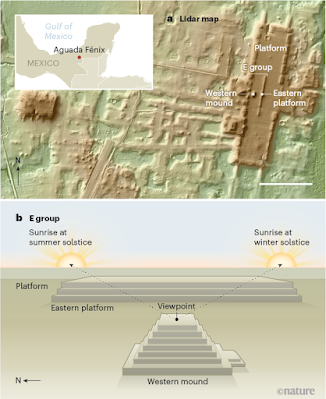LIDAR has uncovered yet another massive Maya site, this time in Mexico. This is the largest known Maya site in history, far exceeding the size of previously discovered pyramids or palaces. The site has been dated to around 1,000 BC, making it the oldest known Maya site to date.
Too lazy to read? Check out my YouTube video
Changing what we know about Maya History
In the studies of the Maya civilization, most archaeologists thought the Maya to have developed gradually. Previous studies believed the civilization have emerged around 1,000 – 300 BC, starting with small villages or settlements.
However, this recent discovery challenges this model of Maya history – showing multiple interconnected cities, massive causeways, and huge ceremonial complexes dating some 3,000 years ago.
Technology and Archaeology
Although LIDAR was first used in archaeology in the 1970s, its capabilities are growing more and more each year. In fact, ground work that would have previously taken 2 years of hard labour can now be complete within 45 minutes. With this kind of tech, pretty much the possibilities are endless.Back in 2018, LIDAR technology led to the discovery of a huge Maya metropolis including over 60,000 structures and covering close to 2,100 square kilometers. This discovery at Aguada Fenix is the second monumental discovery in Maya culture, again changing everything we think we know.
An international team of researchers in Mexico used LIDAR scanning over the state of Tabasco. Here are a few of the notable findings.
An enormous flat-topped pyramid measuring 1,400 meters in length and 13 meters (over 30 feet) in height has been identified as the largest and oldest structure in Maya history. In volume, it would measure 3.8 million cubic meters – exceeding the Great Pyramid of Giza which measures 2.6 million cubic meters. According to lead archaeologist Takeshi Inomata, although the site is so huge, it was previously thought to be part of the natural landscape. However, with LIDAR, it pops up as a very well-planned shape. Despite its height, its horizontal dimensions are so large that you almost don’t notice it. “The discovery marks a time of major change in Mesoamerica and has several implications,” Professor Inomata said.
Roads and Causeways
Nine causeways were also found radiating from the 1.4 kilometer pyramid structure. According to Inomata, it’s possible that many people gathered at the pyramid site from surrounding areas for special occasions or rituals.
Large Plazas and Reservoirs
In front of the massive platform, there are several expansive plazas or places of gathering. It’s believed that the area is a large-scale ceremonial complex, suggesting the importance of communal work required to build such a massive structure.
The archaeological site includes a type of structure called E Group, comprising a western mound and eastern platform, that is associated with astronomical observations, the team said.
Aside from this LIDAR Discovery in Mexico...
It's fascinating to think about the ways that technology is revolutionising archaeology. It can be very difficult to discover just what things were like during ancient times, hundreds or even thousands of years ago. But with new advances in science that we see each day, things like LIDAR really make it possible to –for lack of a better word – shine a light on these past civilisations.







0 comments:
Post a Comment